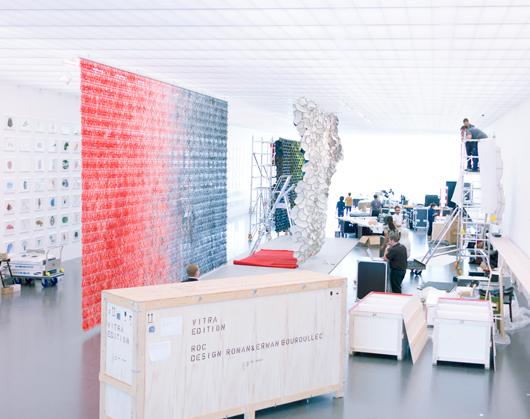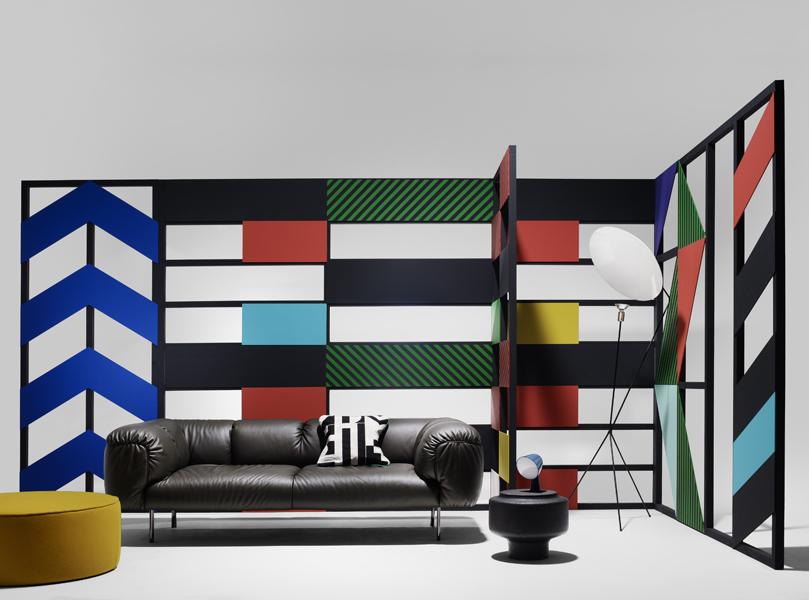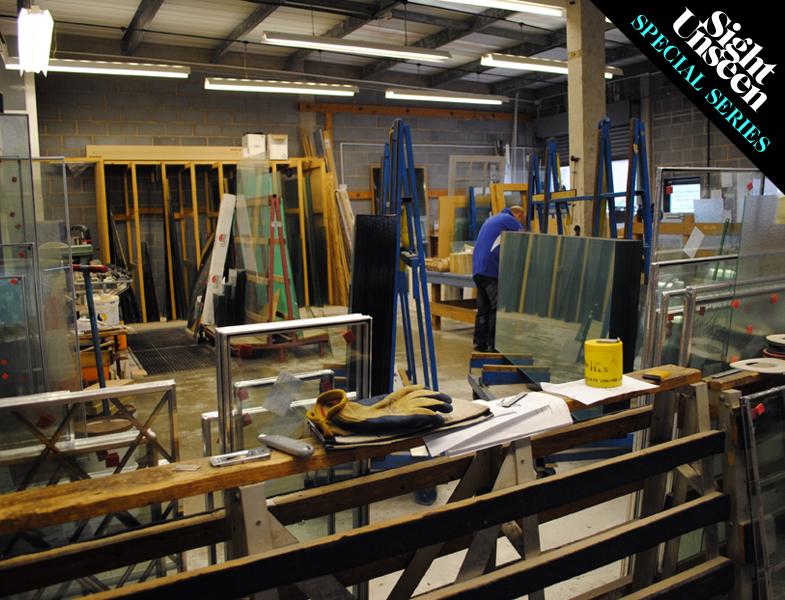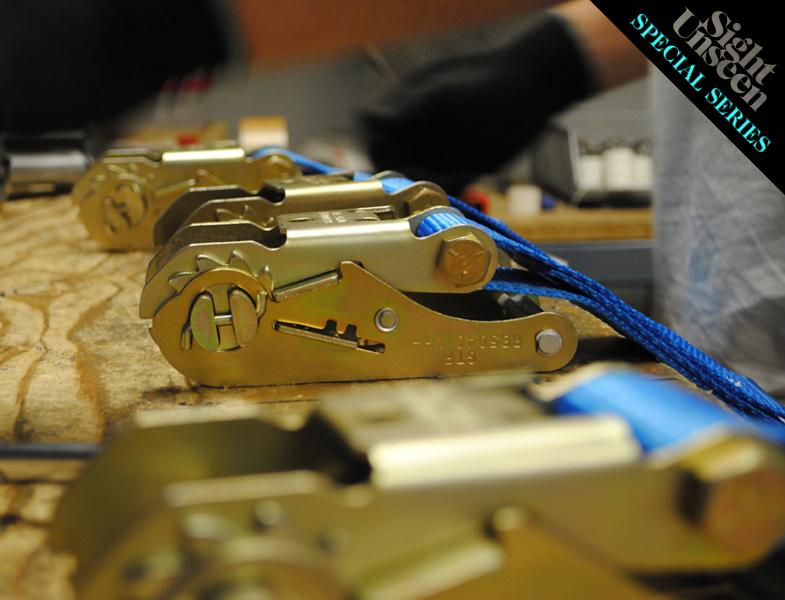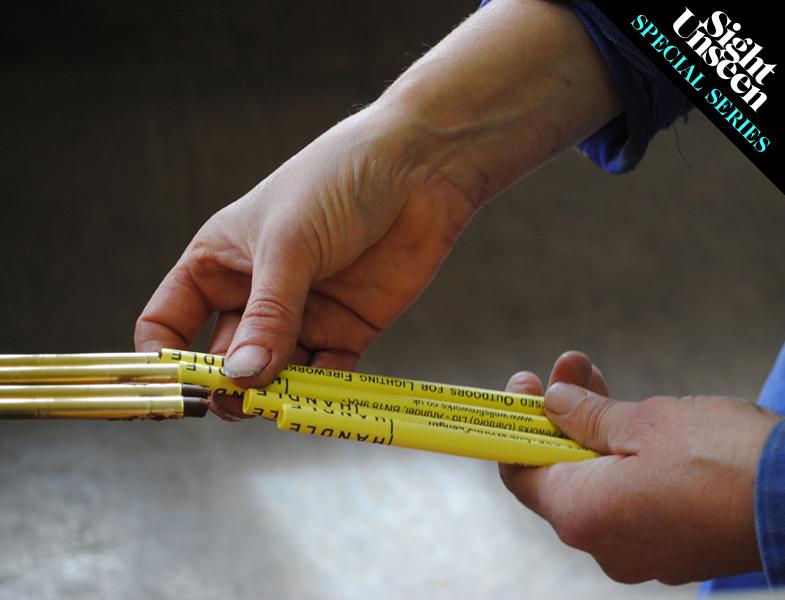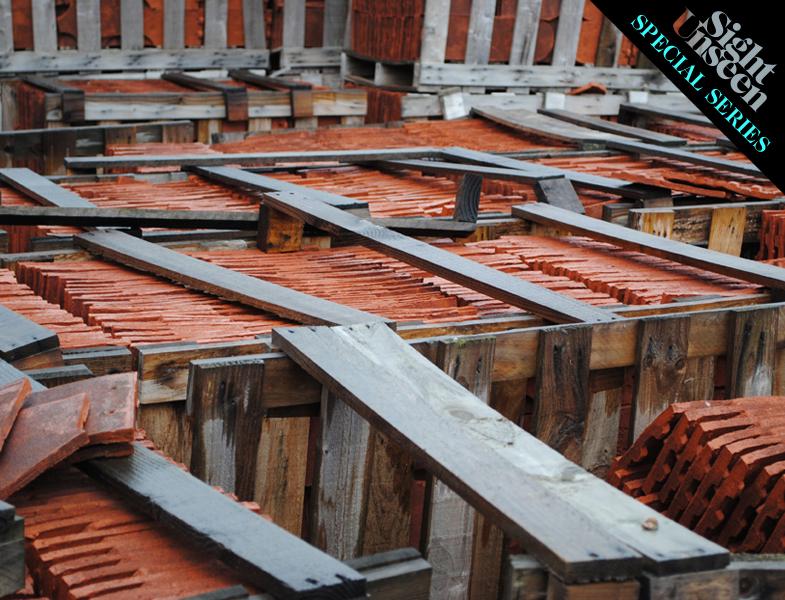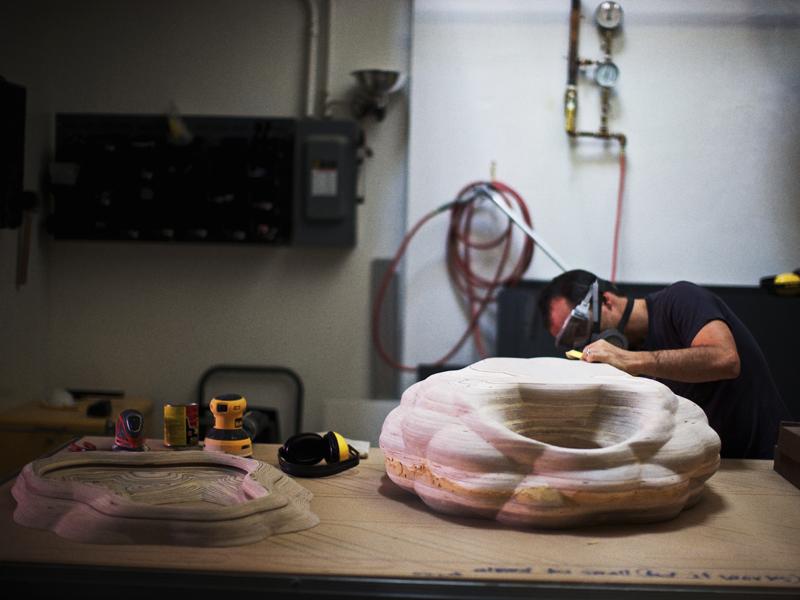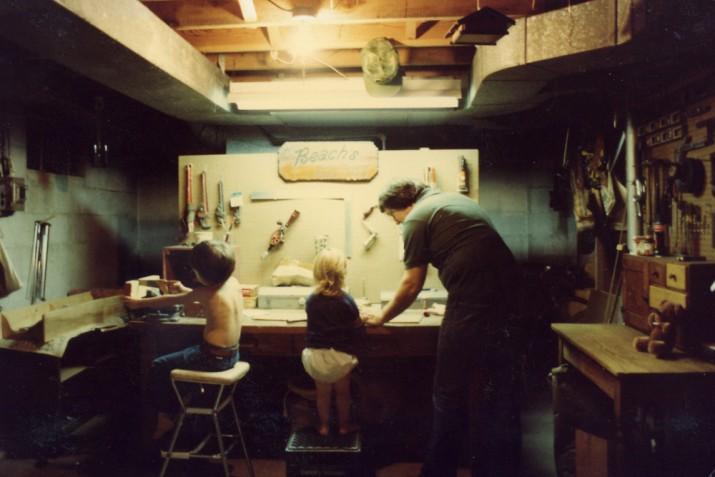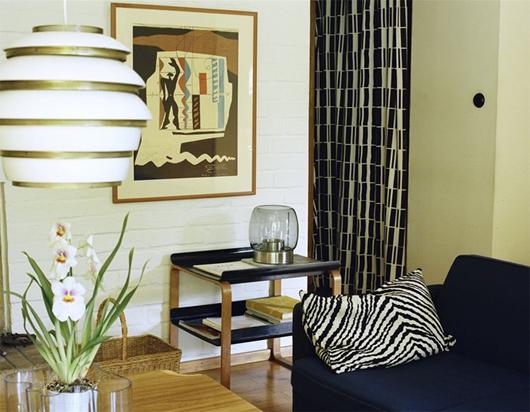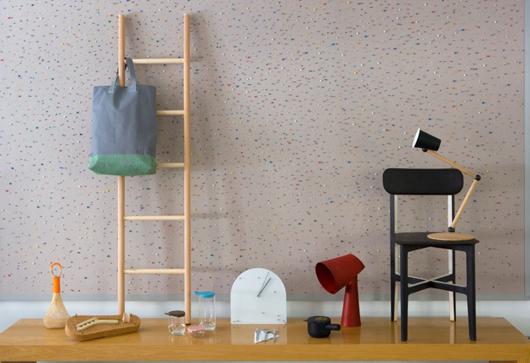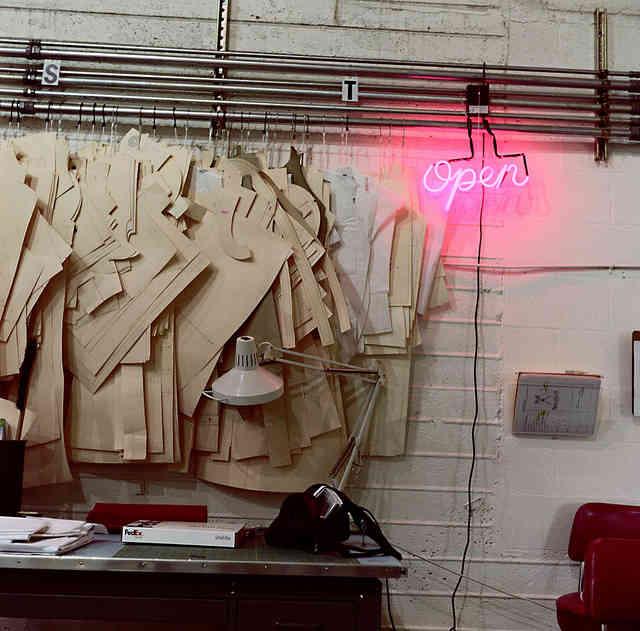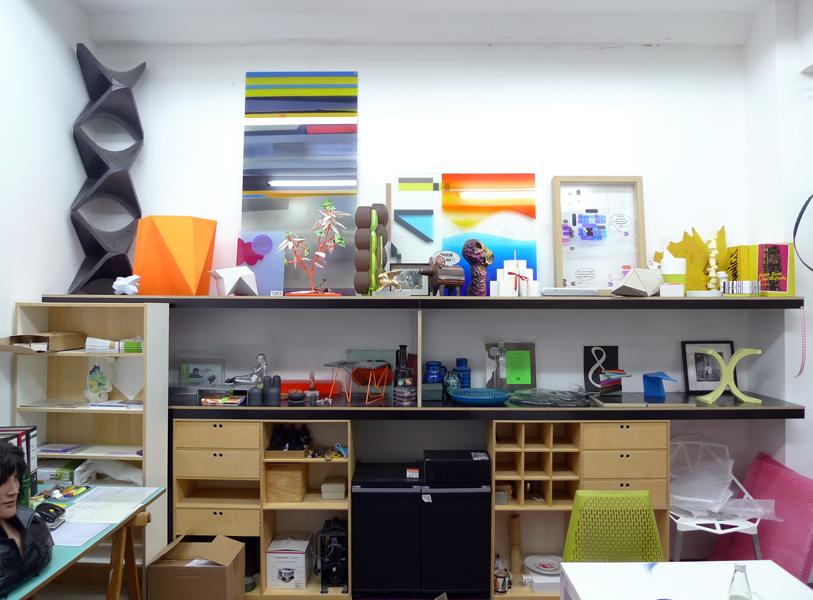
12.21.11
Sighted
Okolo Visits Tobias Rehberger’s Studio
For the team behind the Czech curatorial studio and blog Okolo — Adam Štěch, Jakub Štěch, and Matěj Činčera — their work is informed as much by the fact that they're based in Prague, with a front-seat view of all things fascinating in Eastern European design, as it is by the fact that they love to travel. Adam Štěch has toured the region documenting amazing modernist homes, one of which he covered for Wallpaper this fall and more of which you'll see on Sight Unseen in 2012, and the trio recently produced a print magazine devoted entirely to the city of Vienna. They also traveled to Frankfurt in November, visiting a succession of designers' studios and photographing them for the Okolo website, slotting them in between posts about new work by Tomáš Král and the deconstruction of a Phillips auction catalog. One of our favorites was the studio of artist Tobias Rehberger, known for his striking graphical sensibility and his affinity for design and architecture, recently witnessed in the award-winning series of spaces he created in partnership with Artek; we've reposted it here with additional images and text that Adam prepared exclusively for Sight Unseen. Meanwhile, look out for a more extensive collaboration we're preparing with Okolo for later this winter.
